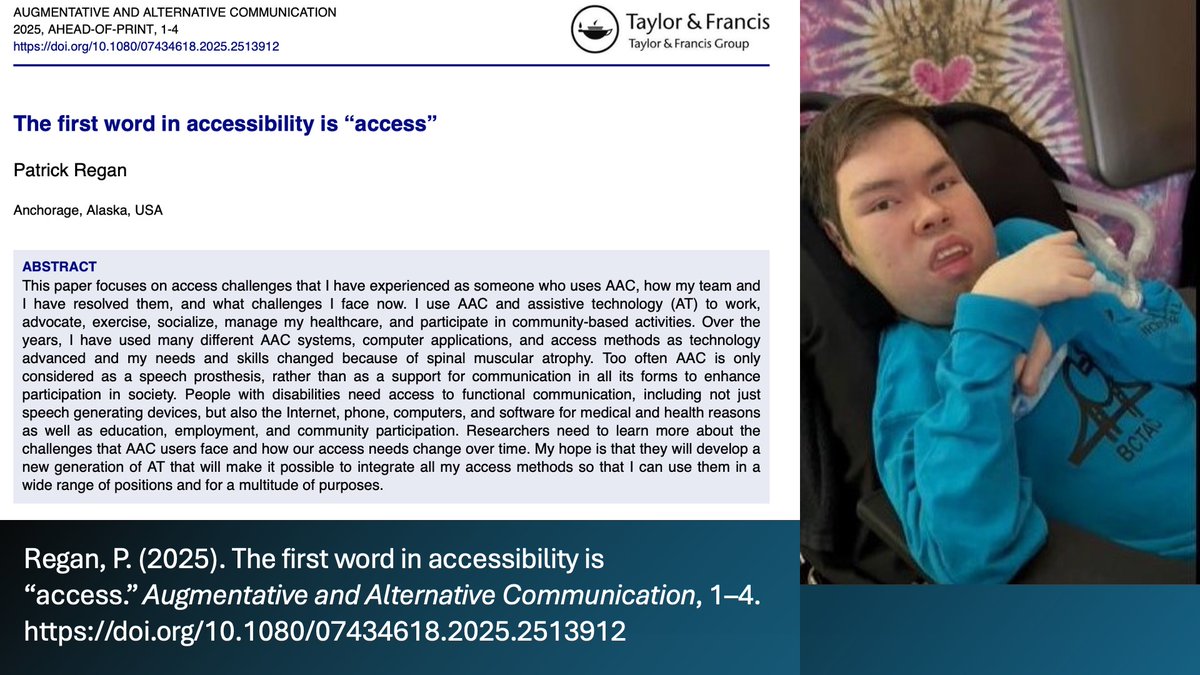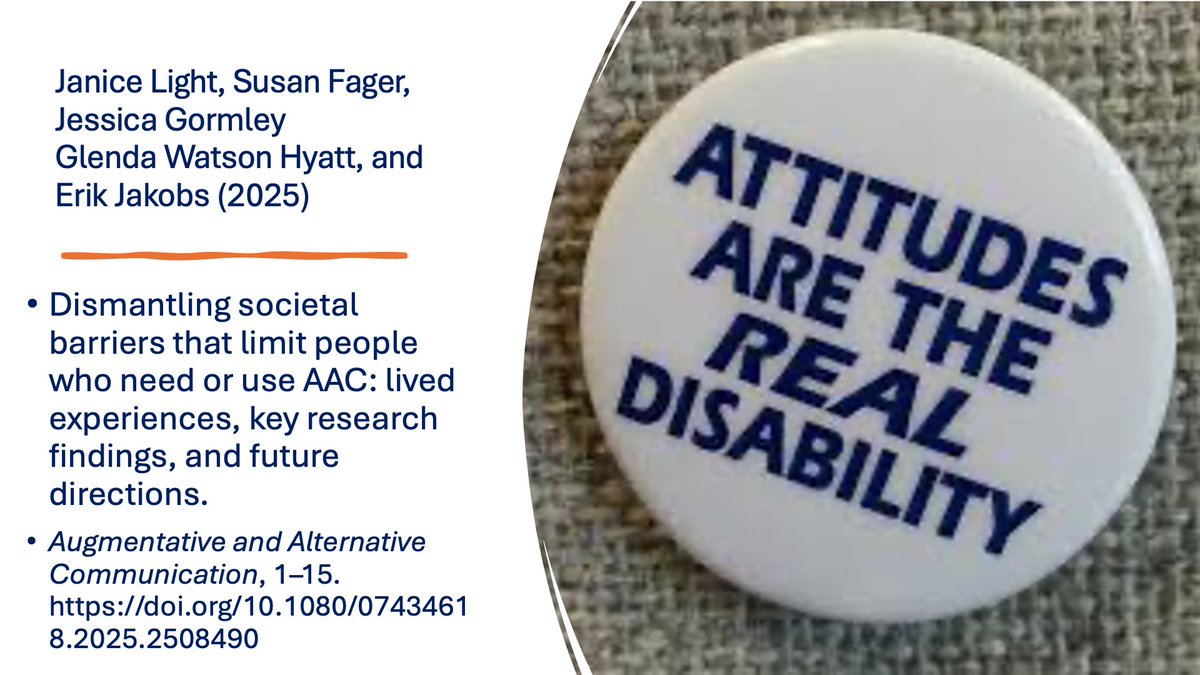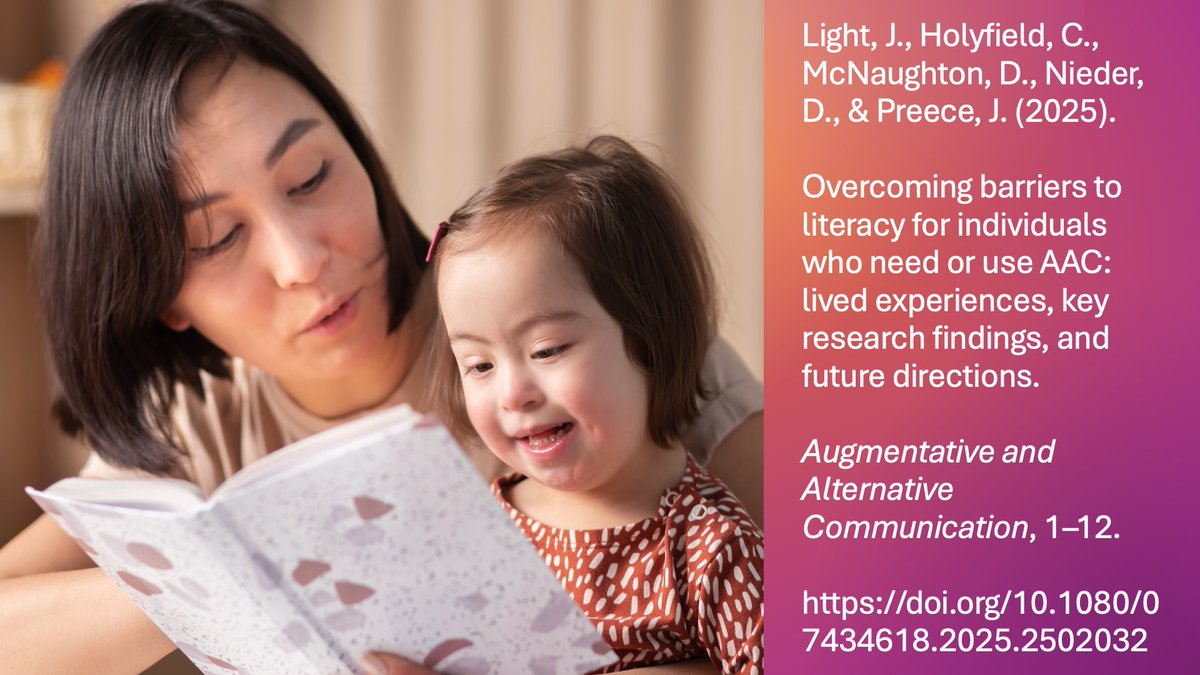RERC on AAC
@RERConAAC
Collaborative center committed to research, development, training, and dissemination in augmentative and alternative communication (AAC), funded through NIDILRR
Jordyn Zimmerman calls for “a more user-centered design approach across the board—where AAC users are not merely participants, but leaders…” Free at doi.org/10.1080/074346… @Communica1st @ISAAC_AAC @NARICInfo

endever* describes their “meaningful participation in society as a semispeaking AAC user, the importance of self-determination and interdependence, and the critical role of participatory research.” Free at AAC journal doi.org/10.1080/074346… @Communica1st @ISAAC_AAC

Grant Blasko is 22 years old, autistic, a full-time user of AAC, and a university student. His paper, “Unveiling underlying systemic isolation challenges for AAC users”, is now free at the AAC journal doi.org/10.1080/074346… @Communica1st @ISAAC_AAC @NARICInfo

Blasko, Light, McNaughton, Williams & Zimmerman argue that ""people who need or use AAC must be leaders and co-creators in all activities that are about them or impact them" Free at @AACjourn doi.org/10.1080/074346… @Communica1st @ISAAC_AAC @NARICInfo

Kevin Williams and Christine Holyfield (2025) describe new directions for innovation in AAC innovation, free at AAC journal doi.org/10.1080/074346… @Communica1st @ISAAC_AAC @Holyfield_AAC

Powerful description of the importance of the work done by @Eyegaze and @TherapyBox
Patrick Regan (2025) is a leader for USSAAC, @ISAAC_AAC & @bridgesch00l. He describes “access challenges that I have experienced as someone who uses AAC, how my team and I have resolved them, and what challenges I face now.” Free doi.org/10.1080/074346… @Communica1st
Patrick Regan (2025) is a leader for USSAAC, @ISAAC_AAC & @bridgesch00l. He describes “access challenges that I have experienced as someone who uses AAC, how my team and I have resolved them, and what challenges I face now.” Free doi.org/10.1080/074346… @Communica1st

David McNaughton, Lance McLemore and Tracy Rackensperger (2025) describe how new approaches to AAC can support societal participation Free at AAC journal doi.org/10.1080/074346… @Communica1st @ISAAC_AAC @NARICInfo @Cekter_Employmt @AACjourn

Pancho Ramirez (2025) describes his use of AAC, including laser pointers, an air mouse, and clinical trials with a brain computer interface. Now free at the AAC journal doi.org/10.1080/074346… @Communica1st @ISAAC_AAC @NARICInfo

Holyfield, Light, Nieder & Preece (2025) describe external challenges to learning language for those who need or use AAC Free at @AACjourn doi.org/10.1080/074346… @Communica1st @ISAAC_AAC @Holyfield_AAC @NARICInfo

“For far too long... research has ignored the greatest problem – the pervasive societal barriers that limit access to AAC and to meaningful opportunities to communicate and participate in society.” doi.org/10.1080/074346… @Communica1st @ISAAC_AAC @NWACS_org

Alice Wong (2025) describes her use of AAC to combat ableism: "Nonspeaking people belong in public, holding court in conversations, doing our thing, our access needs respected, and being our full selves unapologetically" Free @AACjourn doi.org/10.1080/074346… @SFdirewolf

For people who need or use AAC, what are the external barriers to literacy learning? and how can future R&D better support literacy learning? Now free at the AAC journal doi.org/10.1080/074346… @Communica1st @ISAAC_AAC @NARICInfo @AACjourn #AAC_research

Godfrey Nazareth (2025) describes living with motor neuron disease and his creation of AAC technology that has helped him live life to the fullest. Now free at the AAC journal #OpenAccess doi.org/10.1080/074346… @Communica1st @ISAAC_AAC @NARICInfo

Bob Williams (2025) describes the need to “work together to bring about communication equity, not for the privileged few, but for all.” Now free at the AAC journal #OpenAccess doi.org/10.1080/074346… @Communica1st @ISAAC_AAC @NARICInfo